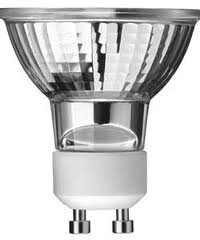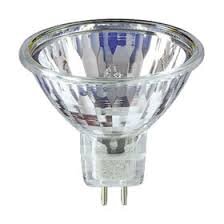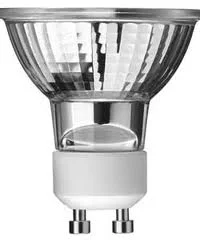Everything you wanted to know about LED light bulbs but were afraid to ask...
LED lights have come a long way from their humble origins as power indicators and lab curiosities. These days they're lighting up major landmarks, and even whole cities.
But what about homes? With so many options and massive differences in quality and price, this can be confusing territory.
So we enlisted Simon Brammer, a programme manager at sustainable energy charity Ashden, to answer your questions. Simon successfully LED-ified his home and has been advising friends and family on the subject ever since.
Over to you, Simon!
What Lights do you use?
I'm 100% LED now - even my fridge light is LED. You don’t need to go that far - I’m a little obsessed!
It has taken me a couple of years of learning to get it right. The most important lesson has been light ‘temperature’. This is measured in Kelvin (you’ll find it on the packet of any light bulb). I like a warm white, much like old-fashioned bulbs. This is about 2700 Kelvin (K).
Now I understand the colour I like, I generally get the right bulb each time. It’s interesting that folks from colder climates tend to favour a warm light, while folks from hotter climes prefer something more white or blue.
One of the reasons I switched to LED is that I have solar panels on my roof, which contribute to the electricity demand of my house during the day. However after I bought a real-time energy meter I quickly learned that I was using a crazy amount of electricity at night - when my panels don’t help. With a bit of investigation I realised my lighting was drawing a lot of electricity. But my electricity bill for my three-bedroom house is now £7 a month, and upgrading my lighting played a big role in that. Even if you don’t have solar panels, lighting uses a lot of power. The good news is, it’s one of the easiest things to change.
Are they cheaper than ‘Low Energy’ light bulbs?
They are not quite as cheap as low energy bulbs yet but they are getting there.
When I think about how much a bulb costs, it is also worth thinking about the running cost. For example, lets say you have four spotlights in your kitchen, it costs £80 a year to run those, whereas LEDs will cost £7 a year to run. The ‘payback’ time calculation is important. It might be tempting to buy the cheap non energy-efficient bulbs, but in the long term you will be better off.
Can you recommend the perfect warm LED bulb to replace my bayonet 60W bulbs?
The elusive perfect bulb - a quest close to my own heart!
Ok, first things first: if you want a warm light you need to choose something with a Kelvin count of 2700 or less. Any higher than this and it will be a colder light.
Next, choose the light output you want. As a general rule of thumb most people know that a 100-watt bulb is bright and suitable for a main light that a 60w bulb is suitable in a lamp, and 25w bulb works where we want soft and gentle light. LED bulbs use about 10% of the energy of traditional bulbs – so 10w will give you the equivalent light output of an old 100w bulb, 6w of a 60w bulb, and so on.
Incidentally, if your fitting is a bayonet fitting, you can easily buy converters on places like ebay that allow you to use a screw fitting in your bayonet lampholder. In this case you would need a B22 to a E27 converter.
Is it possible to replace GU3 halogen bulbs (the sort with two thin pins at the back) with LED lights, without ripping out the entire system?
Yes, it is possible. So it is simply a matter of finding an LED replacement bulb that meets your specification.
The GU tells us that the base has a bipin cap, meaning that it has two pins and the number, the distance between the pins - in your case 3mm.
I had a quick look online and it is possible to source them as more and more LED bulbs are now being introduced. Remember, these are generally low voltage bulbs so you will need to ensure that they are compatible with your system, see my guide.
When you are replacing very specific bulbs, see you if you can get an ‘exact match’ or ‘perfect fit’ labelled bulb so that you know they will fit into the existing aperture.
Is it ok to replace bulbs in a circuit as they go, or would I have to replace all at the same time? And can LEDs exist alongside halogen bulbs?
It depends if they are ‘low-voltage’ or ‘mains’. You can tell this as ‘low voltage’ bulbs have ‘pins’ to connect them and ‘mains’ have pegs (see pictures, bellow). If they are pegs it’s not a problem, but I’d suggest you replace them all anyway. Halogen bulbs use so much electricity for the light they produce - just feel their heat - that it’s a false economy to wait until they blow to replace them.
Pegs
Pins
If they are ‘low voltage’ (pins) it’s a bit more complicated. They will have a transformer either in the ceiling or light fitting. Some LED bulbs have in-built circuitry that can deal with most (but not all) transformers, so you don’t have to change them.
In other cases, you need to replace the transformer with an LED driver. This is because the transformers are too overpowered for the small amount of electricity that LEDs need. You will need an electrician for that.
How have others found the switch to LED’s?
Well lots of people tried LED lighting when it was first available and it often produced dim, cold puddles of light.
Those memories still persist, so in fact a lot of what I do is to persuade people that this is no longer the case. I take a selection of bulbs to people's homes so they can see the range of colours, brightnesses, fittings and so on, so they can try before they buy. That way they get what they want without making costly mistakes. It blows the old ‘bad bulb’ stereotype to bits and the people I know have so far been universally delighted.
There are still some challenges on packaging that don’t make it easy to choose right bulb for its purpose, but there’s a growing lobby for non-nonsense labelling, so hopefully things will change. Take a look at my guide for a step-by-step approach to getting it right.
I have made the switch to LED lighting, what should I do with the old Halogen bulbs?
Recycle them if you can. Please note that you should never throw CFL (compact flourescent tubes) into your general waste, as they contain mercury - another good reason to replace them!
The energy you save by replacing them will far outweigh any embedded carbon in the production of the old lightbulbs.
I have already replaced halogen with CFL lighting, is it still worth me switching to LED’s?
There are still some energy savings, as LEDs do use less energy than CFLs.
But savings are nowhere near as great as if you were replacing old-fashioned light bulbs.
If you are happy with the light there is no need to, but as you replace them you could go LED. You can buy a good quality non-dimmable spot for as little as £4 now. The other benefit is they are ‘instantly on’. No hanging around while your bulbs warm up.
The heat output of tungsten and halogen bulb is part of the heat input to my house, wouldn't switching would reduce this?
I see what you mean - you only have to stand under those bulbs in a bathroom or kitchen to feel the heat pouring off them!
But this would be an incredibly inefficient way of heating your house, for a number of reasons. First, you don’t always want heat, so in the summer for instance, you are heating your house when you probably want it to be cooler. Second, heat rises, so heat from ceiling lighting will stay close to the ceiling and therefore won’t benefit the occupants of a room at all. Third, it’s much cheaper to heat by gas, or biomass, than electricity, and your boiler will have a thermostat to control the level of heat.
Do LEDs work successfully in lights with dimmer switches where many energy saving bulbs do not?
Yes – dimmable LED lights are very reliable now. There are a few things to bear in mind…
Some bulbs have built-in circuitry to manage dimmers; some don’t. They best way to find out is to install them and if they don't dim well, or flicker, you will know to replace the dimmer. They are no more expensive than ‘regular’ dimmer switches.
I have dimmable lights in my kitchen and living room and they work perfectly. Just make sure, when you buy bulbs, they have the dimmable logo on the box or that it states they are ‘dimmable’.
You may have to get your dimmer switch changed to a ‘leading edge’ or LED compatible dimmer. This is because they handle much lower loads. For example if you changed a ‘4 x 60 watt bulb central light’ to LED you would go from switching a load of 240 watts to nearer 30 watts.
The LED bulbs I have switched to have lasted months, not years as advertised. So, how can you be sure that LED's will last the reported amount of time?
Poor quality, cheap bulbs don’t last long
Some of my LED bulbs are more than 5 years old and still going strong. If your bulbs are blowing on a regular basis there may be something else wrong - loose connections in lamp holders, faulty connections to light switches, over-heating a bulb in a small confined space and so on. If this happens elsewhere in your home it could be a general issue. If it is in just one room, a local one. In either case it might be worth contacting an electrician to investigate it for you.
Is there anything that needs to be / can be done with the home lighting circuit to prolong LED bulb life?
In my experience if you buy quality they last.
While there are energy efficiency advantages to ‘voltage optimisation’ (this lowers the voltage in your house to about 220 volts that nearly all appliance now work on and thus saves money) these systems cost a fair amount and may not improve bulb life.







